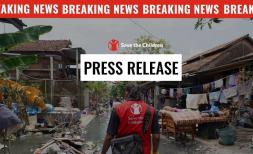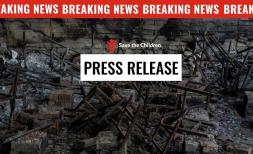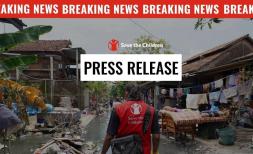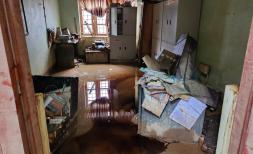Horn of Africa: Over 100 killed and 700,000 displaced by El Nino rains as region braces for more wild weather
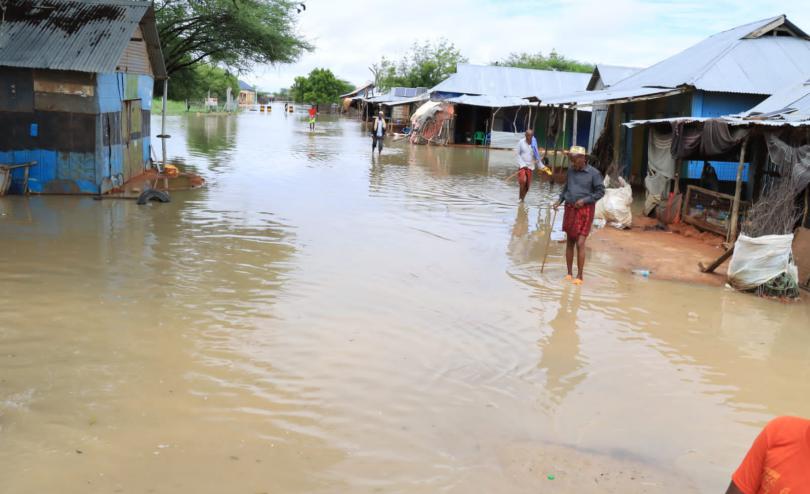
NAIROBI, 16 November 2023 – Devastating flash floods have killed at least 111 people, including 16 children, across the Horn of Africa in recent weeks, with more than 770,000 people displaced and rains showing no signs of slowing down, said Save the Children.
Unrelenting rainfall across Kenya’s northern counties and the capital Nairobi has led to widespread flooding, displacing an estimated 36,000 people and killing 46 people since the beginning of the rainy season less than a month ago. Two boys drowned in two separate incidents in Nairobi, where city rivers have broken their banks and flooded informal settlements.
Similarly, heavy rainfall in Somalia and the Ethiopian highlands has left the central Somalia town of Beledweyne completely submerged, after the Shabelle river burst its banks forcing and estimated 250,000 people or 90% of the population out of their homes. Across Somalia, eight children are amongst 32 people who are known to have died in the floods, with more than 456,000 displaced country-wide. Bay region, in South West State, is bearing the brunt of heavy rains, accounting for 37% (454,320 people) of the more than 1.24 million people affected by the floods.
In the Gambella, Afar and Somali regions of Ethiopia, Save the Children teams are reporting continuous and relentless heavy downpours, which have led to flooding, landslides and displacement. At least 33 people including eight children have died in the floods in Ethiopia, with the deaths caused by people drowning while trying to flee the devastation[1].
The floods are the latest in a series of extreme weather events in recent years to hit the Horn of Africa, where children and communities find themselves at the sharp end of the global climate crisis.
The El Nino weather phenomenon, which has brought the unusually heavy rains, thunderstorms and extreme floods, comes after the worst drought in 40 years following five failed rainy seasons which has decimated livestock and crops, pushing the the region to the brink of famine.
The aid agency is calling for urgent national and international intervention to respond to the massive displacement in Kenya, Ethiopia and Somalia. Many of the displaced families forced to move to higher ground, including thousands of children, are now in critical need of emergency supplies like food, shelter, clean water, and toilets.
Save the Children’s Country Director for Somalia, Mohamud Mohamed Hassan, said:
“We’re calling for urgent action to help communities to respond andbetter protect children’s lives and reduce long-term impact. While children are the most vulnerable to crises like these, they are also extremely resilient. With the right support, given at the right time, they can overcome even the most unimaginable challenges.”
Save the Children’s Country Director for Kenya, Yvonne Arunga, said:
“Children are always the most vulnerable in crises like this. They are more likely to face hunger, become severely malnourished or contract deadly diseases when they are cut off from nutritious food, safe water, sanitation facilities or healthcare.
“We need to urgently ramp up our support to families and children including sharing messaging with families on how to reach safe spaces in time ahead of flooding, supporting evacuation plans or protecting school infrastructure ahead of a storm so that children can return to learning as soon as possible. Critical to this is also making sure that children input into planning processes wherever possible.”
Save the Children’s Country Director for Ethiopia, Xavier Joubert, said:
“Heavy flooding and displacement have cut off families and children from basic services including access to food, healthcare, water and hygiene services. With that comes the real risk of waterborne diseases including cholera and measles.
“We need to make funds available to ensure we act in anticipation of such humanitarian crisis and the continuity of essential services like healthcare facilities, schools, and child protection systems. Interventions such as reinforcing buildings and water infrastructures to better withstand extreme weather or ensuring health teams are equipped with equipment and skills to support both prevention and response to outbreaks will go a long way in supporting communities.”
Save the Children is utilizing prepositioned items and humanitarian relief materials in Ethiopia and is providing cash assistance and distributing household items to displaced people in Kenya. In Somalia, the aid agency is running mobile health and nutrition services in evacuation sites, water tracking, hygiene promotion, distribution of mosquito nets and acute watery diarrhea kits.
Save the Children has worked in the Horn of Africa for over 70 years and is a national and international leader in humanitarian and development programming in health, nutrition, water hygiene and sanitation, education, child protection and child rights governance. In 2022, Save the Children reached 14.7 million people in Ethiopia, Kenya and Somalia, including more than 9.6 million children.
*******************************************************************************************************************
For further enquiries please contact:
- Delfhin Mugo delfhin.mugo@savethechildren.org
We have spokespeople available in the impacted countries.
Our media out of hours (BST) contact is media@savethechildren.org.uk / +44(0)7831 650409
